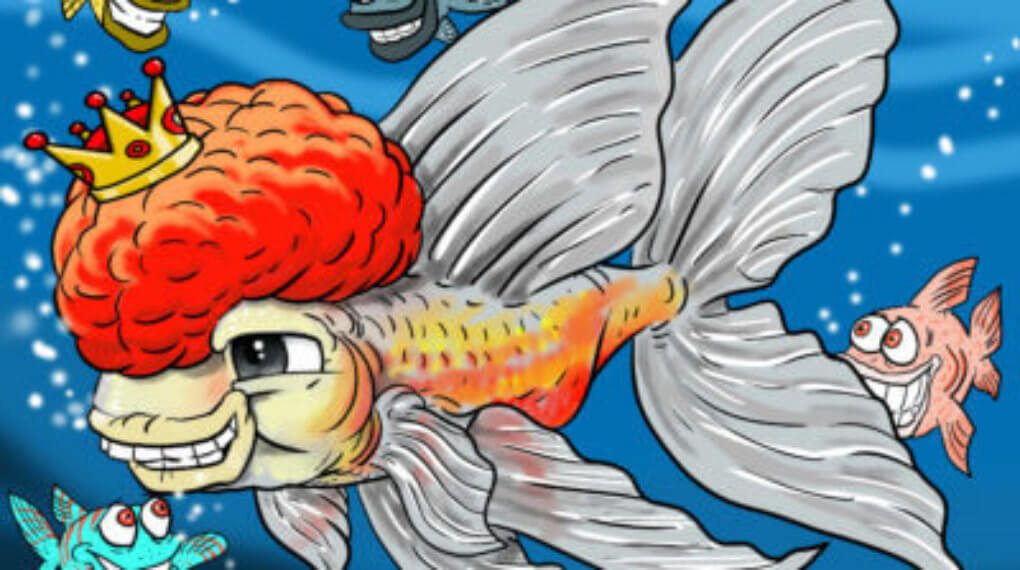History: Where did the Oranda Fancy Goldfish originate?
The Oranda Goldfish was originally bred in China as most goldfish breeds were (although some breeds were further developed in Japan).
The Chinese named the breed “the flower of the water” because of their graceful swimming habits and their physical appearance.
While we may know these fish as simply the Oranda, the Japanese refer to them as Oranda Shishigashiri.
Like all goldfish, Orandas are a descendant of the wild Carp. However, this is one of the only goldfish breeds to resemble the Carp barely at all.
All about the Oranda Fancy Goldfish
“The flower of the water”
Physical Characteristics: How To Identify The Oranda In An Aquarium
This goldfish breed is a fat little fish with a brain-like growth on the top of their heads.
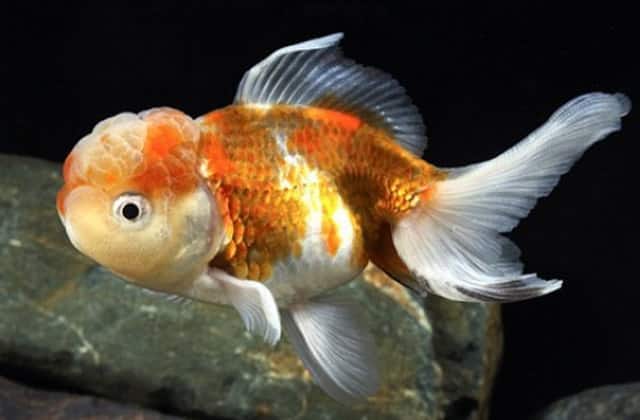
This brain-like growth begins to develop when the fish are around the age of 4 months old.
The growth should be fully developed when the Oranda is around the age of 2 years old. Although, some Orandas take a little longer to develop it.
You may also see this brain-like growth referred to as a wen or a hood. The Oranda is not the only goldfish breed to produce this hood.
The Lionhead and the Ranchu develop a hood as well. Their eyes are sometimes hard to find if their hoods grow too large.
The Oranda Goldfish is one of the egg-shaped goldfish breeds.

This means that their bodies are neither slender (like the Common Goldfish) nor golf ball-shaped (like the Pearlscale).
The Oranda has a beautiful dorsal fin and a long and flowing caudal fin (tail fin).
In fact, these tail fins tend to fan out when the Oranda stops swimming for a few moments.
Their scales are a beautiful metallic variety that can be found in various colorations and patterns.
These colors and patterns include black, calico, red and white, solid red, yellow-orange and even a blue variety.
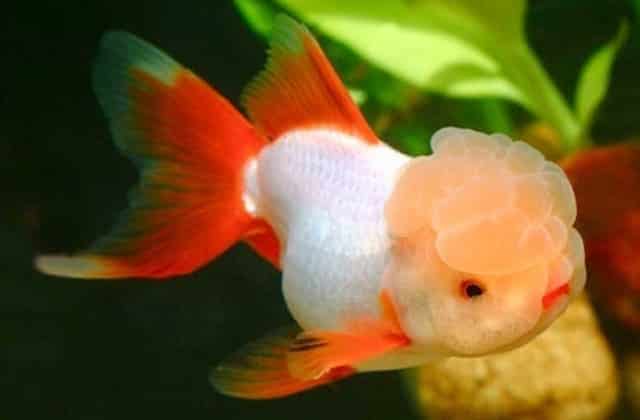
Most Orandas grow to be about 7 inches long. However, they are capable of growing much larger if provided the proper living conditions and care.
The most substantial Oranda ever documented was 15 inches long and was named Bruce.
Bruce was bred in a Hong Kong aquarium and was undoubtedly well cared for and provided exceptional living conditions.
There is another variety of Oranda Goldfish known as the Redcap Oranda. The only difference between this breed and the original Oranda is that their wen is always a solid red coloration.
The Difficulty Of Care: Is The Oranda Goldfish Difficult To Care For?
These goldfish are not recommended as “beginner fish.”

Their brain-like growth and their fat bodies create a delicate fish that can be easily harmed if the owner is inexperienced.
The Oranda is also considered a sensitive fish because of their intolerance for polluted water.
This means that they require regular tank cleanings and water changes for them to remain happy and healthy.
Any goldfish breed with a hood (including the Oranda) will need a clean tank and quality water to live in, or their hoods are likely to become infected with any floating debris, bacteria, and even fungi that are residing in the tank.
These are harmful to goldfish like the Oranda and can rest in the folds of their hoods thus causing the infection.
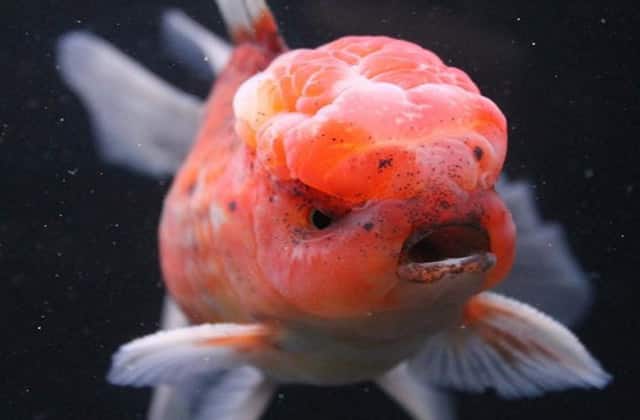
They also require a good filtration system and heater.
The heater can regulate the water temperature while the filtration system can remove unwanted materials from the water.
The filtration system should provide mechanical, biological, and chemical filtration. Mechanical filtration will help remove anything that is physically floating in the water.
The Biological filtration will help break down this debris and turn it into beneficial bacteria.
Finally, the Chemical filtration will remove any unwanted toxins such as chlorine, copper and other chemical materials from the water.

The Oranda (and all other goldfish breeds) require a large aquarium to live in.
They spend their entire lives in a single habitat; it is your responsibility to provide an aquarium with enough space for them to grow, for them to swim, feed, and play.
A large tank will also give the Oranda more oxygenated water and thus be a healthy habitat for them.
Finally, it is essential that you do not pair the Oranda Goldfish with a more active swimming fish.

The Oranda is known for being one of the slower swimming fish because of their round body shape.
If they were to share their tank with a Comet Goldfish, Common Goldfish or a Shubunkin (or any other agile swimmer), then they would be easily outswum during feeding time.
The Difficulty Of Care: Is The Oranda Goldfish Difficult To Care For?
Goldfish are possibly one of the easiest going creatures on the planet, especially when it comes to food.
They are omnivores which describes a living being that can eat anything anytime any place.
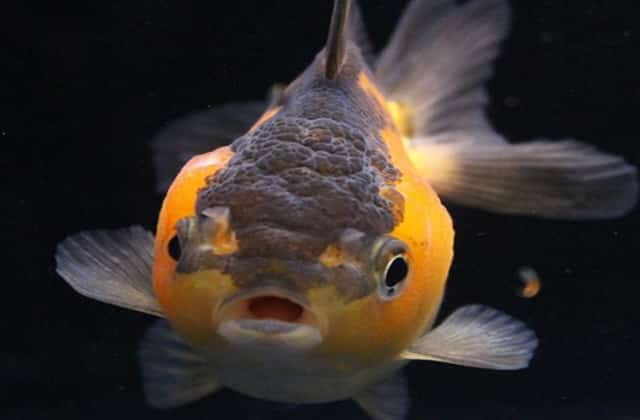
Oranda Goldfish will gladly attempt to eat anything they are given.
However, they do have a list of favorites that are highly recommended if you are considering owning goldfish.
Goldfish favorite foods:
- Insects: including ants and flies
- Worms: including earthworms and bloodworms
- Larvae: especially mosquito larvae
- Vegetables: including broccoli, mashed peas, and lettuce leaves
- Fruits: including blueberries
- Plants and plant roots: They will usually nibble on the live plants you plant inside their aquarium. Goldfish are known to be diggers and may also dig up the plants, uprooting them and then nibbling on the roots.
- Algae: They will likely also nibble on the algae that are growing inside the tank. Do not be opposed to this habit. Algae can be quite good for goldfish, and it can satisfy them when they get the munchies.
- Brine shrimp: this is usually a favorite food of Fry Fish (young fish). However, is sometimes recommended for adults.
Habitat Requirements: What Kind Of Aquarium Should You Buy And What Does The Oranda Need?
The Oranda Goldfish will require a large tank in order to have enough room to grow, swim, play, and feed.
A large tank will also provide the Oranda with more surface area which results in more oxygenated water (assuming that you do not overpopulate the tank).
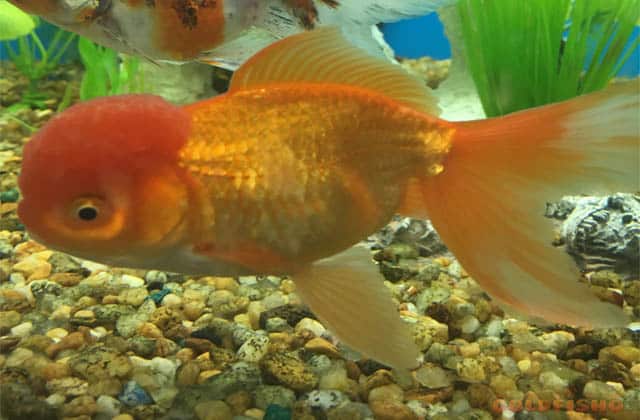
Water changes are essential for the Oranda’s health and wellness. Water changes should be performed bi-weekly.
30% of the old tank water should be removed with a siphon and placed in a bucket. 30% recently treated tap water should replace the old 30% tank water.
However, if any of the still objects or décor inside the aquarium require cleaning, then they should be removed during this process and rinsed off inside the old tank water bucket.
Personality and Temperament:
The Oranda is a fascinating fish. They have veery sweet personalities that shine when their favorite owner is showering them with attention.
They are also very peaceful and can help their owners with their health problems just by merely existing.

Finally, the Oranda is an intelligent fish that will recognize its tankmates and be able to distinguish its owners from strangers.
Health:
The Oranda is a generally healthy breed if they are provided good quality water and a good filtration system to prevent hood infections.
They could, however, develop any other goldfish disease or illness including:
- Goldfish ICH
- Swim Bladder Disease
- Velvet Disease
- Parasites
- Fin Rot/ Tail Rot/ Mouth Rot
| Minimum Tank Size: | 30 gallons |
| Temperament: | Peaceful |
| Care Level: | Easy |
| Water Conditions: | 65-75° F, KH 4-20, pH 6.5-7.5 |
| Max. Size: | 10 |
| Color Form: | Red, White |
| Diet: | Omnivore |
| Origin: | Asia, China, Japan |
| Family: | Cyprinidae |
Oranda Goldfish Questions and Answers
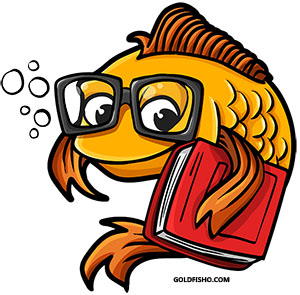
What is a Oranda goldfish?
Known for its fleshy hood (wen)
Type: fancy
Colors: red, black, calico, chocolate, red/white
Type of Swimmer: slow
Temperament: peaceful
Single or Twin-tail: twin
Level of Care: not for beginners
What does a Oranda goldfish cost?
$8 – $50 each
What are compatible tank mates for Oranda goldfish?
Other slow swimmers; Black Moor, Ranchu, Lionhead, Bubble Eye, Ryukin
Note: Slow swimming goldfish should not be placed with fast swimming goldfish. Fast swimmers are aggressive eaters at feedings.
Characteristics and Traits of Oranda Goldfish

Photo Credit @fish_source
Diet of Oranda Goldfish
What does a Oranda goldfish eat?
Pellets
Live food (bloodworms, shrimp)
Fruits & vegetables
- Floating pellets allow easy monitoring of amount eaten
- High in stabilized vitamin C
- Vitamin A,C,D3, and E added
- Promotes incredible colors that won't fade over time
- All types of premium grade or fancy goldfish, especially Orinda, Lion head, Azumanishiki and Ranchu
Last update on 2025-04-07 / Affiliate links / Images from Amazon Product Advertising API
Tank Requirements for Oranda Goldfish
What should the water temperature be for an Oranda goldfish; and do I need to have a heater for the tank?
65 – 72 degrees (F)
A heater is required to maintain water temperature.
Do I need to have an air stone (air pump) in my Oranda goldfish’s tank?
Yes but be careful not to have an overly powerful one because of the Oranda’s slow swimming difficulty which that water movement may hinder.
Does a Oranda goldfish’s tank require a filtration system?
Yes, all goldfish should have a filtration system in their tank.
Be careful that your filtration system’s water intake is not too powerful for the Oranda because they are slow swimmers and too much movement in the water can be difficult for your Oranda to tolerate.
Special Care for the Oranda Goldfish
Orandas require special care because of fleshy hood and swimming difficulty.
The tank must not have anything pointy or sharp because of the Oranda’s fleshy hood. Special care must be used when using decor or plants in the tank.

